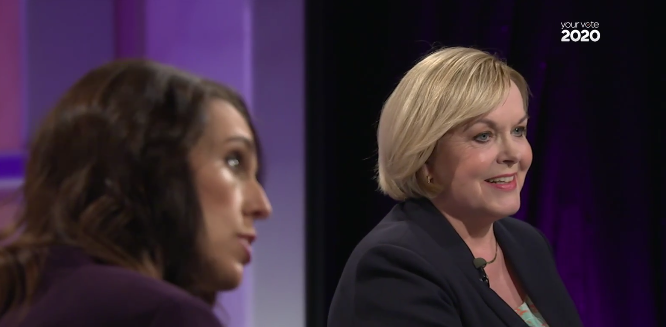
Analysis by Keith Rankin.

The most recent TVNZ Colmar Brunton poll felt about right: Labour/Green on 54% and National/Act on 38% of decided voters. But I sense that Labour is losing momentum.
What needs to happen to make Judith Collins the Prime Minister in October? National/Act need just five percentage points more, and Green to fall below five percent. This combination of possibilities is not improbable.
Act is running hot with many voters just now, and seems to be winning over many undecided voters, just as the Bob Jones party did in 1984. While Act’s message of fiscal rectitude – a message laced with comedy – is quite cynical, it is effective with an electorate trained by almost all of our political messengers to be very afraid of public debt.
National has managed this fiscal policy issue much better than Labour, by promising – through ‘temporary’ tax cuts – both the need for immediate fiscal stimulus and the promise of lower future public debt. Further, Labour has boxed itself into a corner with its doubled ‘winter energy benefit’ soon coming to an end. Many poor Auckland families will fall into immediate poverty as a result, because they have been using this to pay the rent.
Disenchantment arising from the insensitivity of withdrawing benefits at this time may see many potential Labour voters not bothering to vote at all.
Labour stands to being seen as, simultaneously, both stingy, which it is, and profligate, as Act paints it. Both perceptions could be costly to Labour. The Green Party suffers likewise, and is looking less attractive to its past left-feminist supporters, thanks to the James Shaw ‘Green School’ gaff.
Not only has Labour mismanaged the messaging about fiscal stimulus and public debt, it has also mismanaged the messaging about our two-vote voting system. Labour has failed to train the media into properly distinguishing between the proportional party vote and the plurality (ie ‘FPP’) electorate vote. Labour has shown no inclination to facilitate the election of a Green electorate MP, and that naïve pretence that the candidate vote is also a party vote could cost the present Government dearly.
To vote Labour in Auckland Central or Wellington Central or Tamaki-Makaurau (or anywhere else) is to vote for the Labour Party, not for the Labour electorate candidate. To vote for a Labour-led government, Labour supporters in those named electorates should vote for the Green Party candidate; in each case, to achieve their political objective, it is crucially important that those three Green candidates be in Parliament.
Even if Labour wins this time despite the Green Party failing, this would make a Jacinda Ardern led government unnecessarily vulnerable in 2023.
I think that Labour/Green will prevail, nevertheless, despite both parties’ ‘own goals’. First, Labour’s billboards emphasising the electorate vote over the party vote may inadvertently help the Green Party get over five percent. Second, Labour’s biggest asset is the Judith Collins’ billboards showing Gerry Brownlee standing behind her. Gerry is truly yesterday’s man, is gaff-prone, and unpopular. The important question is whether Labour or Act becomes the main beneficiary of the Brownlee ‘turn-off’ effect.
(Judith Collins will be very happy if National gets 30% and Act gets 20%. Indeed, in that scenario, National may get some overhang MPs. And, with Paul Goldsmith not making it back to Parliament under that scenario, then David Seymour may become the next Minister of Finance. Help!)







